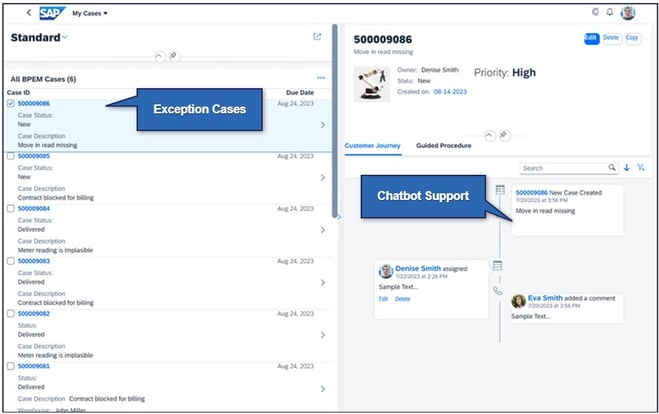
April 23, 2024
Generative AI & CX: What to Know, What to Tap Into
.jpg)
Maureen Coveney Bolen
Chief Growth Officer
Every so often, a technological advancement comes along that offers the potential to significantly impact how we live. Remember the BlackBerry? The world’s very first smartphone – and all the ever-smarter phones that have followed – provided us a mobile work environment, enabling us to remain connected to our work and personal lives while on the go, and offering us “information at our fingertips” wherever we find ourselves. These devices revolutionized how we work because they made us productive wherever we were.
Today, we are witnessing the newest transformative technology: Generative AI (“Gen AI”). Gen AI promises to increase our productivity and save us countless hours that we would otherwise devote to searching and resolving our work- and life-related questions. Just as we’ve come to depend on smart devices in our lives, we’ll now rely on Gen AI to interpret the information at our fingertips, suggest our next possible actions, and drive our personal productivity even higher than what’s possible today.
What is Generative AI?
Generative AI is a class of artificial intelligence systems that generates content such as text, images, or data that is contextually appropriate. The large language models that underpin Gen AI have been trained on vast amounts of text data, which enables them to comprehend and generate human-like responses in natural language. It can provide proactive assistance with all manner of questions and tasks. And it is evolving and improving at an extremely fast pace.
For utilities, there are many use cases for this ‘proactive assistant’ across the value chain (see Figure 1). Commodity suppliers can apply the technology to improve operations, and they should also explore the transformational potential of Gen AI to help create a highly interconnected energy system and improve Customer Experience (CX).

Recently, CIS vendors have put a major focus on using Gen AI to create innovations in CX – and with good reason.
For utility CX operations, Gen AI will be useful in many ways. It can be used to:
- Provide possible explanations for a customer call
- Detect issues and provide reasons for asset management needs
- Provide the framework for chatbots to enhance customer self-service
- Automate processes for business process exception management
- Implement an AI assistant for employees to more effectively and efficiently complete tasks
- Enhance the Meter-to-Cash cycle with automated correlations and Enterprise Performance Management (EPM) metrics
- Generate customer metrics, such as customer lifetime value score and customer engagement score
Use Cases for Utilities
As noted above, there are many use cases and business functions in utilities that can leverage Gen AI and enhance Customer and Employee Experience. The use cases are only limited by the capabilities of the technology, organization, and processes that support them.
Utegration, a Cognizant company, is applying Gen AI to help utilities with some very specific, value-based use cases. Read on for details that might spark how Gen AI can help your organization.
Customer Engagement
Gen AI can facilitate open dialogue between the consumer and utility by using relevant data delivered in a human way – helping to build a stronger relationship.
Gen AI can provide intelligent chatbots for customer service language models that offer round-the-clock support to customers: addressing their queries, scheduling appointments, and providing relevant information on account-specific, outage info, usage predictions, EV rates, and solar panel installations. These chatbots enhance customer service while interacting with the customers to generate responses from in-house data. Because AI-driven chatbots are well-versed in human speech, they provide more holistic and empathetic responses than a traditional chatbot.
Automated Energy Usage Advisor
Gen AI excels at analyzing claims or prior authorizations, swiftly extracting crucial information, and identifying areas in which humans need to focus more. By reducing the decision-making load on electricity users around electricity use and providing information on batteries, EV usage and solar household consumption, gen AI can generate high-quality recommendations to assist consumers in reducing electricity consumption – and relieving them of sticker shock.
The models can help consumers understand home energy consumption, providing answers to such questions as:
- How do I consume?
- How should I consume?
- When should I consume?
- What is my consumption lifecycle?
In this way, Gen AI can benefit consumers, promote green energy use, and generally reduce the world’s carbon footprint.
Call Center Dashboard Advanced Analytics
Call center leadership is always focused on optimizing a handful of metrics. Standard metrics include, but are not limited to:
- Call Volume

- Average Handle Time (AHT)
- Average After-Call Work (ACW)
- Average Call Abandonment Rate
- Average Response Time (ASA)
- Call Transfer Rate (CTR)
- First Call Resolution (FCR)
- Customer Satisfaction Score (CSAT)
Integrating the technologies that generate the data required to create these metrics can be a major project. However, one way to implement a change without a major overhaul of the call center or its associated business processes is to integrate Gen AI into the IVR. The objective is to reduce call volume that is routed to call center agents by automating as many of the customer requests as possible. The Gen AI solution should try to resolve customer requests but also provide output that a call center agent receives to improve efficiency. A Gen AI solution can efficiently take the user provided data from the IVR system and analyze the integrated systems (ERP, CIS, MDMS, OMS, etc.) to provide a quick, probable reason for why the customer is calling. This would prompt the call center agent to prepare to answer the caller more efficiently and reduce AHT and FCR.
Water Meter Health and Rightsizing
The Water Meter Health and Rightsizing use case focuses on Meter Operations and Asset Management business processes to provide three key benefits to any utility providing water utility services:
- Improve water meter reading accuracy, for better billing accuracy and customer satisfaction
- Protect water meter assets installed in the field, which reduces operation costs and benefits revenue protection
- Optimize issue management, which reduces field operations costs and increases customer satisfaction
There are three main high-level business processes where this use case is most relevant:
- Issue Detection Reports
- Service Order Management; and
- Post-hoc Analytics
In Service Order Management processes, for example, Gen AI can be used for “investigation correlation,” when a field investigator has inspected a meter in the field and added free text notes to the service order. The role of Gen AI in this example is to correlate and categorize notes so analytics is easier and can be used in different data models.
In Post-Hoc Analytics, Gen AI can be applied to “Field Note Analytics,” which is defined as using free text notes from completed service orders and mining the data for information. This is similar to the investigation correlation but related to the end results of a service order where more than an investigation was completed. Analysts want to be able to determine what was completed and how the work was completed so workforce management can optimize business processes. A manager might want to introduce a new process to resolve a particular problem with meters. Or the manager may want to reprioritize service order worklists based on the results of different types of orders.
Employee Engagement
For utilities, the process of managing billing exceptions can be very iterative and require a great deal of exception case category knowledge. In the SAP world, SAP has offered technical capabilities that lend themselves to Gen AI-based solutions for various ERP or CIS “personas” – think of these as Call Center roles, such as the “Billing Exceptions Back Office Worker.” For managing exceptions, Utegration has leveraged that technology to create the Utility4U™ Fiori Exception Management Work Zone for automated resolution of exceptions, leveraging Gen AI (see Figure 2).

This user experience includes a case management dashboard along with investigation chatbots and guided processes to provide insight regarding a customer’s consumption and billing. The chatbots support the quick review and resolution of exception cases, which can lead to an enhanced customer experience and increased customer satisfaction.
Getting Started with Gen AI & CX
Like the smart phone, we can expect the rapid development and introduction of Gen AI into our work and personal lives to lead to some interesting and largely beneficial impacts.
With Gen AI technology evolving so quickly, our recommendation is that you don’t wait to get started. Maybe you start small to develop real-life experience and some good examples of how it works, so you are prepared to scale as the technology matures. As to where to begin, we hope this article has provided you with a few ideas. But we’d be delighted to support you in this exploration.
As you’ve just read, the experts at Utegration are already busy tapping into Gen AI to bring real value to our clients’ businesses. We are scaling our own capabilities and are concurrently guiding our utility clients as they define their AI and CX strategies. With our delivered products, accelerators and services, we are collaborating with our utility partners to deliver Gen AI-enhanced experiences that enhance and extend their capabilities to serve themselves, and thus to better serve their customers.
If you're attending CS Week in Fort Worth, we invite you to come meet our team at booth #811 and see what Gen AI can do for your utility’s CX.